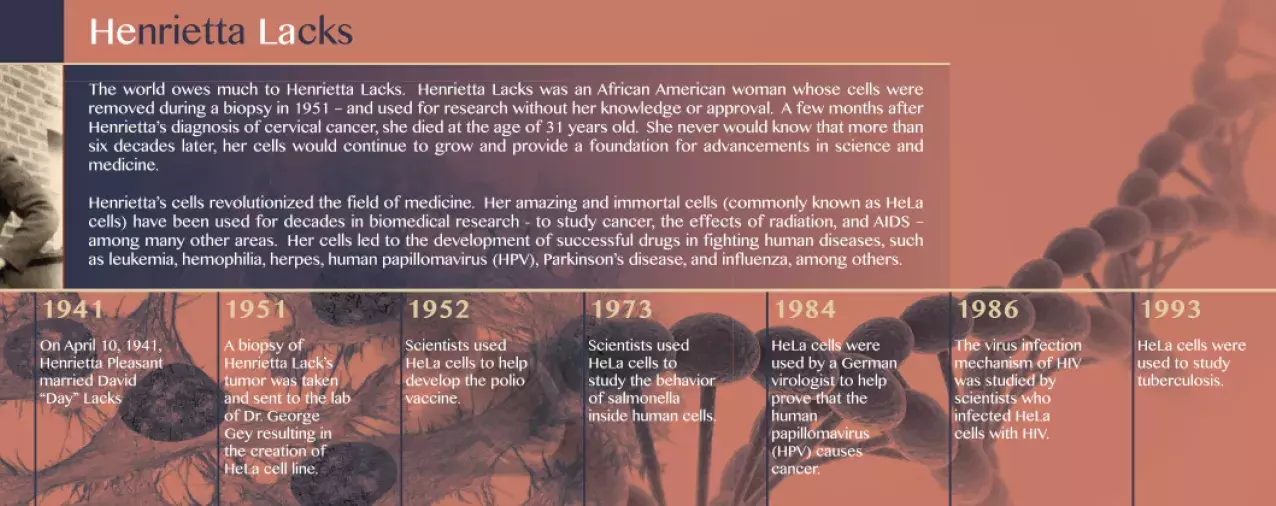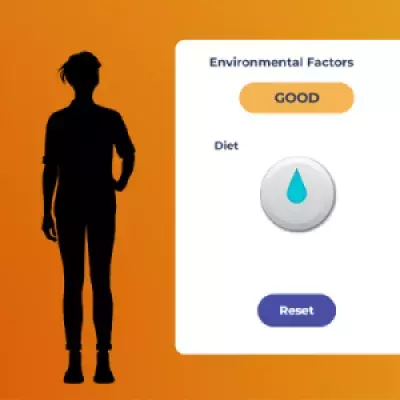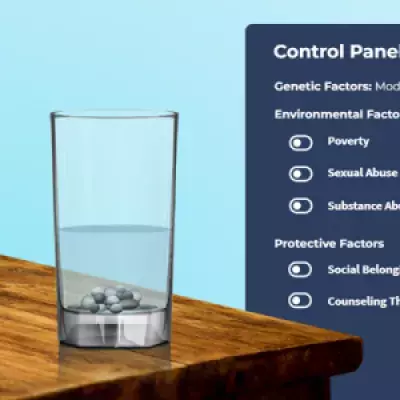HeLa Educational Resources

What Is It?
This infographic poster, created by NHGRI, highlights focal points in the life of Henrietta Lacks – an African American woman who has only recently received widespread and well-deserved recognition for her contribution to decades of medical research. Since her unknowing, and often unrecognized, cell donation in 1951, HeLa cells have been used for decades to further scientific research on cancer, the effects of radiation, and AIDS. This free, downloadable poster file is an engaging visual aid, source of information, and stimulus for discussions related to Henrietta Lacks and her immortal cells.
How Does It Work?
Born in 1920 in Roanoke, Virginia, Henrietta Pleasant married David Lacks in 1941, and went on to bear five children. At the age of 31, a biopsy revealed the presence of a fast-growing cervical tumor. At a time when scientists struggled to maintain viable cell cultures, cells derived from her biopsy proved uniquely able to survive and proliferate in culture – in fact, early HeLa cultures doubled every 24 hours!
Unfortunately, patients’ rights and consent were poorly regulated at the time. When she died at age 31, neither Henrietta nor her family knew that her cells would be shared and used by researchers for decades. The “HeLa” cell line contributed to development of the Salk polio vaccine and enhanced understanding of bacterial infection, human papillomavirus, HIV, and tuberculosis. Her cells were also used in developing drugs to combat many human diseases. In 2013, more than 60 years after Henrietta Lacks untimely death, the NIH reached an agreement with her family to permit controlled access for studying the whole genome of HeLa cells. Her family will also be acknowledged in articles or talks resulting from the use of HeLa cell genome data.
Why Is This Important To Me?
Many information sources now exist about Henrietta Lacks, especially since publication of the 2010 book and 2017 movie, The Immortal Life of Henrietta Lacks. Information about her life and uncompensated contributions to medical research provide an opportunity point for discussing the rights of patients and women, medical ethics, treatment of minorities, and fair compensation under the law. This timeline highlights major events in Henrietta Lacks’ life and her posthumous contributions to medical advances, which continue to benefit thousands of people throughout the world.
About the Creators:
This Henrietta Lacks poster was created by the education team at the National Human Genome Research Institute (NHGRI). The poster may be re-used, linked to, or reproduced freely as printed copies. Please credit the National Human Genome Research Institute.

